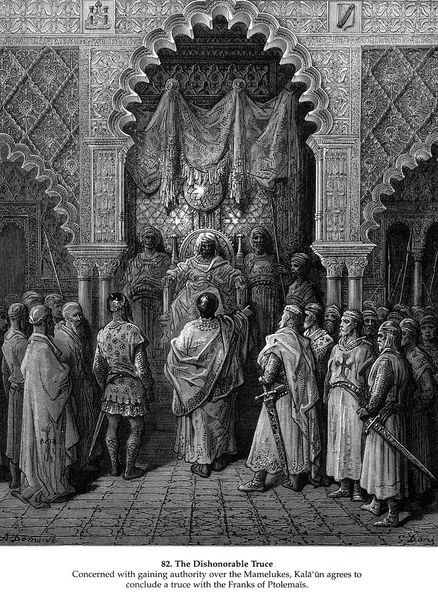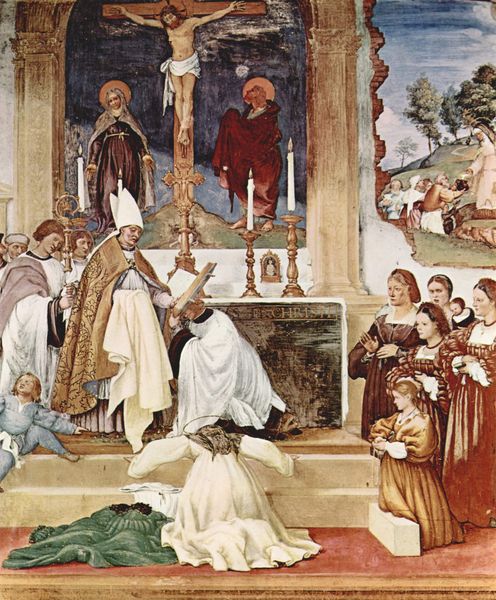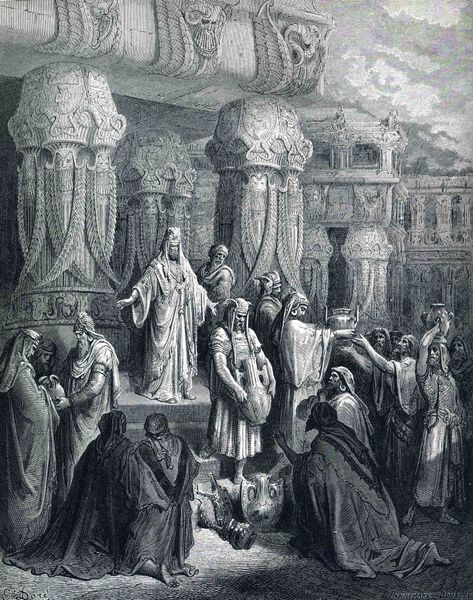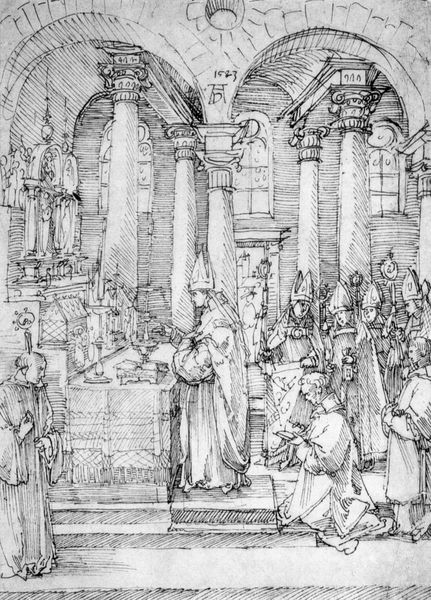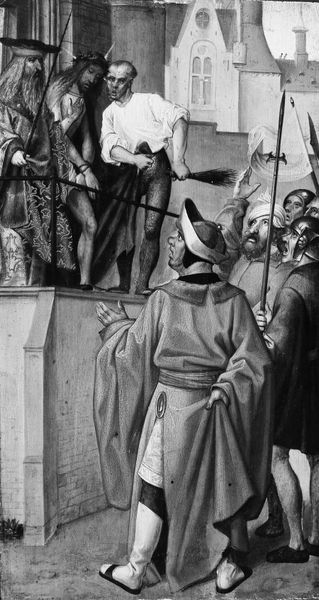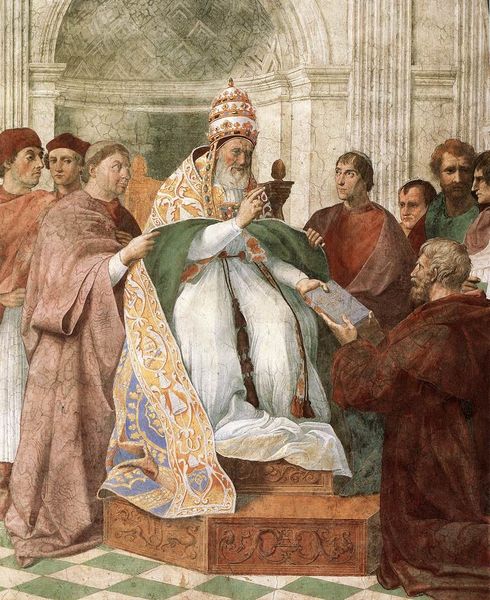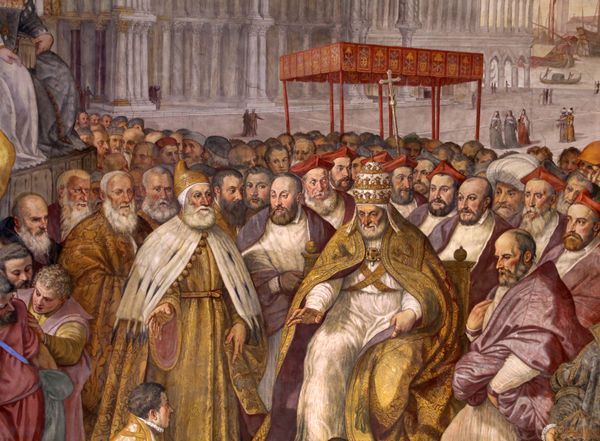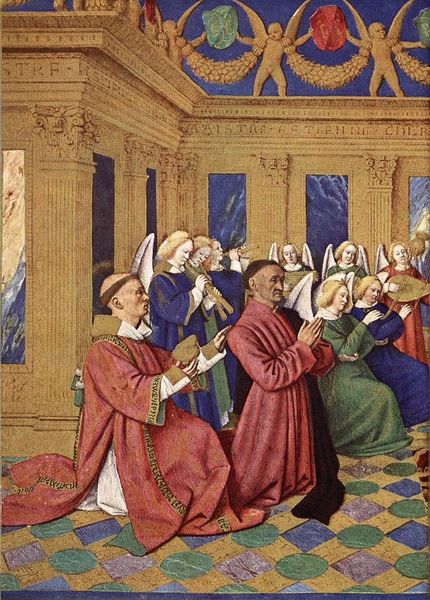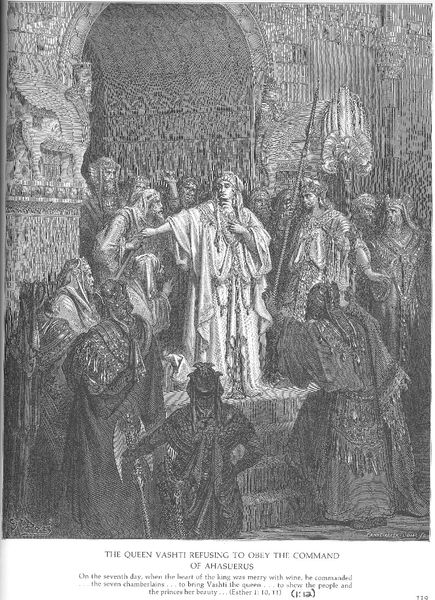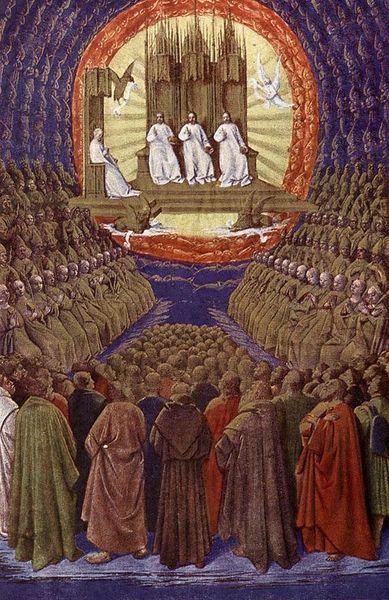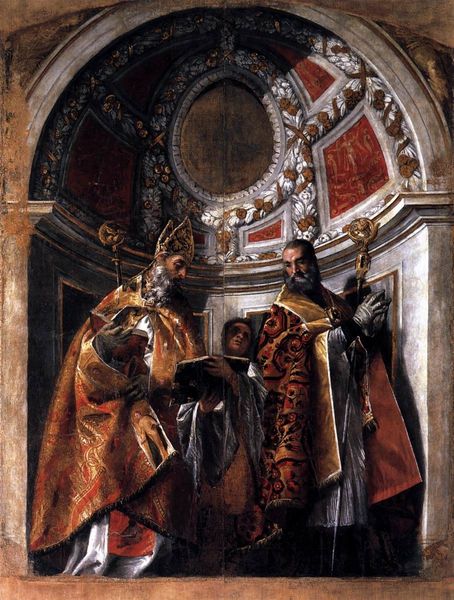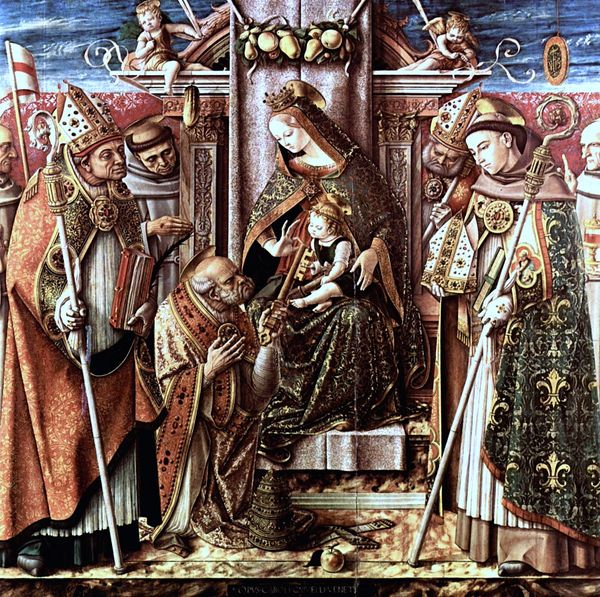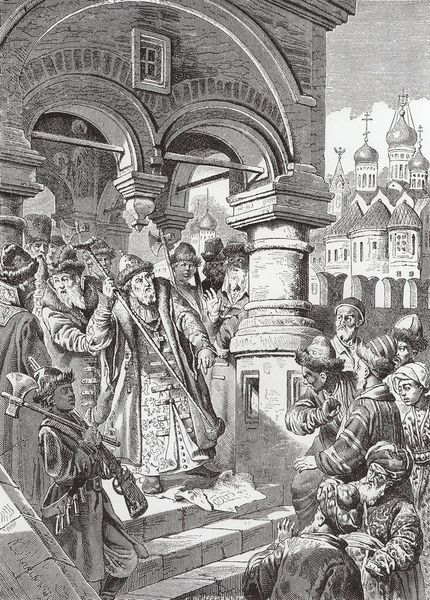
painting, oil-paint
#
painting
#
oil-paint
#
holy-places
#
oil painting
#
painting art
#
genre-painting
#
history-painting
#
academic-art
Copyright: Public domain
Editor: This is "Imposing the Cardinal's Berretta," painted in 1875 by Currier and Ives, in oil. It seems like a straightforward historical depiction, very focused on the opulence of the church and its vestments. What is your reading of this work? Curator: I see the painting as deeply intertwined with the economic and social conditions of its creation. Look closely at the materiality: oil paint meticulously applied to canvas. This itself speaks to the means of production and consumption in the art market of the late 19th century. But even further, what are the garments constructed from? Whose hands crafted them, where, and under what conditions? These silks and embroideries speak volumes about power structures. Editor: That's an interesting angle. I hadn’t considered the literal labor involved in creating the scene’s splendor. Curator: Precisely! And what about the setting? Look at the architecture of the holy place. Can we trace the economic factors influencing the cathedral's design and construction? Who benefitted from its grandeur? We could investigate who had access to this religious institution. How might this artwork serve as a marker for systems of labor and the ways in which commodities, sacred objects and holy space are all used to impose this "cardinal’s berretta”? Editor: So you are saying it is more than a snapshot, it's an accumulation of economic power, class, and labour displayed? Curator: Yes, a snapshot dependent upon economic structures and revealing social hierarchies embedded in the everyday practices surrounding religious life. Consider also the intended audience and purpose of this image. It wasn't created in a vacuum, was it? What would people at the time make of this display of pomp and power? Editor: That has broadened my perspective of the work. I now see the oil paint, fabrics, and building, and even the artwork itself, as goods within a certain society and culture. Curator: Exactly! This refocuses our understanding away from traditional notions of artistic genius, and allows us to see the real material conditions through which artistic practice is constructed.
Comments
No comments
Be the first to comment and join the conversation on the ultimate creative platform.
